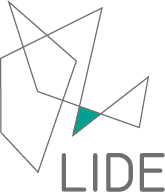Início » Publicações » Teaching Design Project in sight of Design Partnership: a new-old way to teach Design
Teaching Design Project in sight of Design Partnership: a new-old way to teach Design
2013
- Congresso
Design Learning for Tomorrow Design Education from kindergarden to PhD. Oslo: ABM-media, 2013. Oslo and Akershus University College of Applied Sciences
Autor(es):
This essay is part of an undergoing investigation of interdisciplinary nature between the fields of Design and Assisted Technology. Starting from the principle based in Kerckhove (1998) ideas, that each technology extends one of our faculties and transcends our physical limitations, we want to get the best extensions of our body. The focus of this study is to produce an interactive book in bilingual digital format (Brazilian Sign Language – LIBRAS and Portuguese) by means of an investigation encompassing relations of design, information technology and communication. The aim, thus, is the development of a hypermedia environment that helps the process of reading for deaf children, but not exclusively. In this paper will be presented a summary of the methodological process in which the research is founded, and part of the first stage of investigation, in other words, the study of similar and the foundation for developing the narrative envisioning an adequate project of visual, verbal and sound language in order to collaborate with the process of interpretation and construction of the meaning of information that will be made available. The research project encompassing this study was funded by Brazilian development agencies, the National Council of Scientific and Technological Development, an agency of Brazil’s Ministry of Science, Technology (CNPq) and Innovation and Foundation for Research Support of the State of Rio de Janeiro (Faperj). The intention of this study is to found and develop means that enable relationships between knowledge about necessities and potentialities of deaf children and to make available a book that might stimulate their development and, in consequence, facilitate their inclusion in society.
R. Marquês de São Vicente, 255 – sala 708F – Edifício Frings | Gávea/RJ
Telefone: (21) 3527-1587 | E-mail: lide.dad@puc-rio.br
Menu
